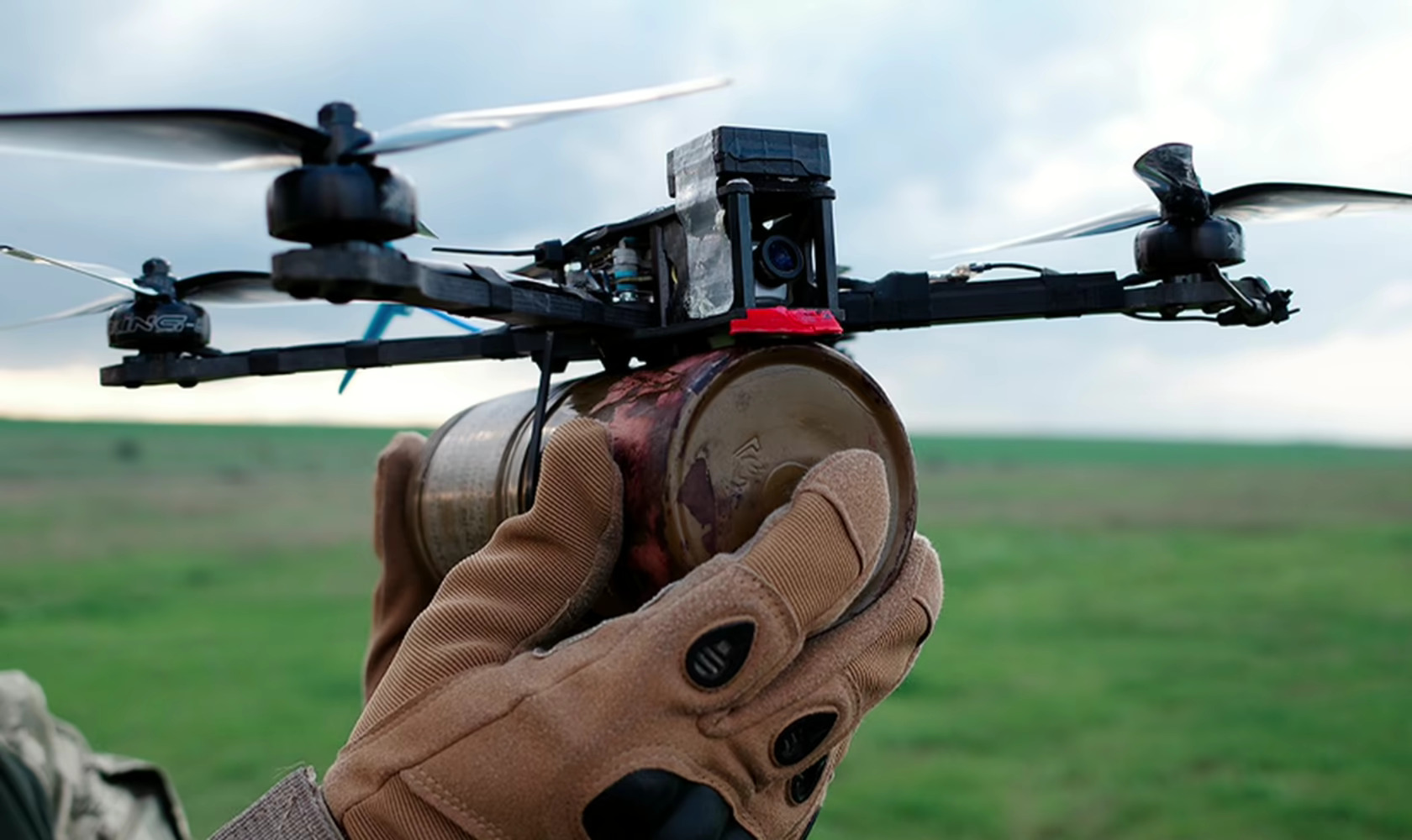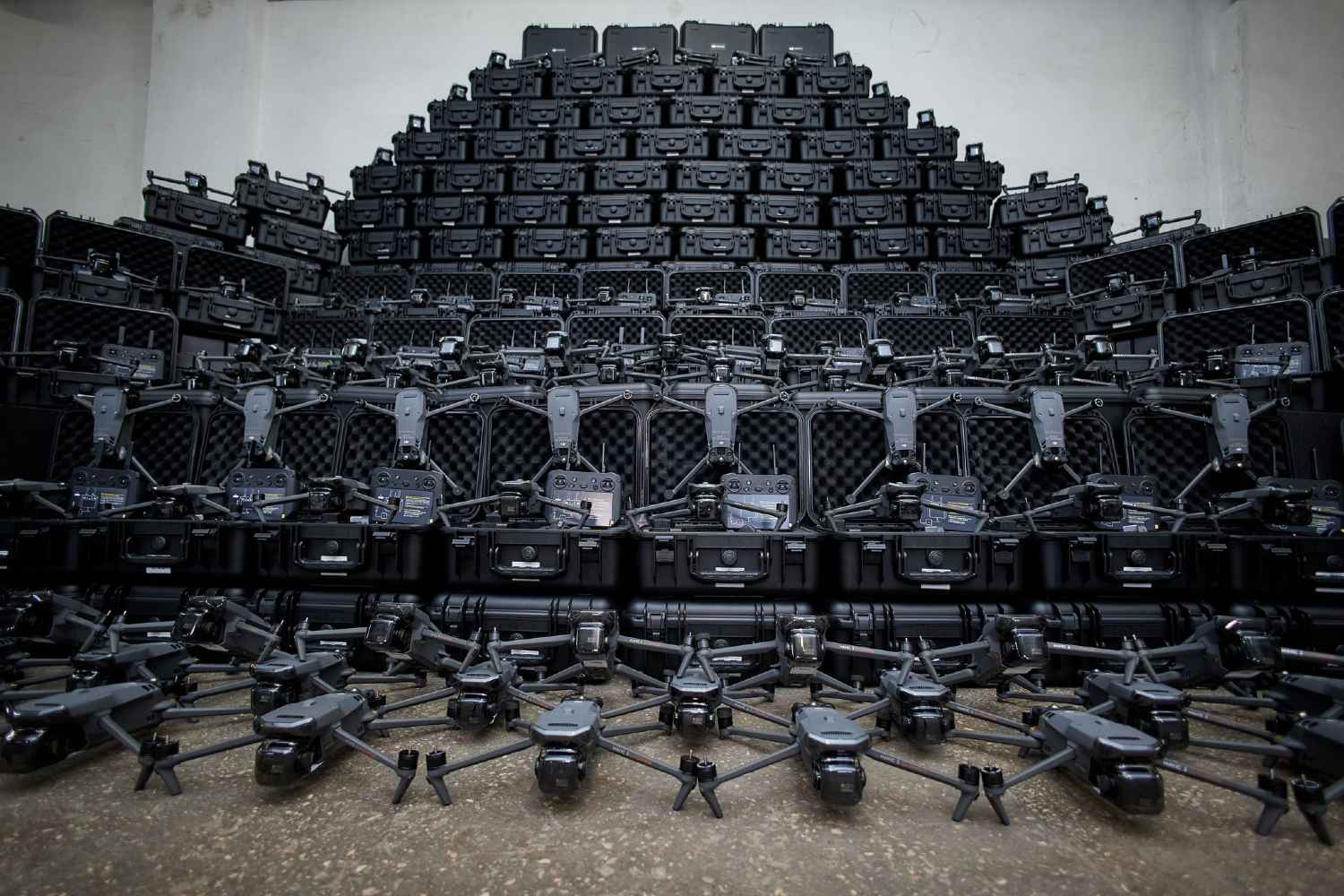In an exciting battlefield development representing an intersection of industrial policy, diplomacy, and international commerce, Ukrainian kamikaze drones are being operated without prior surveillance of targets.
The loitering UAVs haphazardly hunt for targets after taking off, increasing their chances of being shot down or hitting low-value, insignificant targets. Russian soldiers and electronic warfare specialists observed jamming and studying the video feed of many such drones.
As reported by the EurAsian Times in prior reports and analyses, drones have redefined conventional warfare, with even ordinary civilian sector UAVs shown to have military utility.
Even drone piloting, drone engineering, and software coding have emerged as a niche military vocation, with armies imparting training. But here, too, First Person View (FPV) drones have proven to be the game changer, owing to the ease and agility in control they offer.
Based on prior mainstream media reports, Ukraine’s state of affairs seems to be primarily a result of the debarment from buying private Chinese drone maker DJI’s UAVs. Russia and Ukraine bought these en masse for battlefield surveillance and artillery fire correction.
Fly First, Hunt Later
According to a report in Izvestia, based on the “interception” of a “video signal,” Russian military personnel “recognized” the “tactics” of Ukraine’s kamikaze drones. According to an operator of an FPV drone in the 200th Separate Guards Motorized Brigade in the Northern Military District, pilots of Ukrainian FPV drones “determine the target if it appears, when the copter is already in the sky.”
“Typically, the combat work of kamikaze drones is carried out against pre-designated targets, which are determined using aerial reconnaissance drones, and then the exact coordinates are transmitted to the operators, towards which the FPV drone flies,” the report said. The Ukrainian drones operate in the 5.8 gigahertz frequency range, making it easy for Russian EW to jam them and employ “free hunting.”
“The (Ukrainian) drone is trying to fly as deep as possible into our immediate rear or to the front lines, looking for supply routes, some roads, and stays there, just hanging or flying until it spots a target,” the soldier said. In other words, the drone pilot doesn’t head directly to a target but begins looking for it only after taking off.

This naturally increases the chances of the drone being detected, jammed, or shot down. “When a drone runs out of battery power, it simply falls and explodes, and a new one is sent to replace it,” the soldier was quoted further in the report.
China’s DJI Drone-Maker Choked Supply
One of the reasons why Ukrainian drones are being sent without prior surveillance is the absence of civilian drones that can be repurposed for the task. Chinese drone maker DJI has managed to finally restrict its drone sales to Russia and Ukraine, which has left the latter with only the FPV kamikaze drones it procured over the last few months.
According to BBC, after months of effort throughout 2022, the Chinese government ordered export restrictions like licensing and end-user certificates. Moscow and Kyiv exploited their absence to procure the aircraft through other countries and third-party dealers and distributors. This was in response to international outrage that Chinese drones were being used in conflict.

Ukraine had pioneered using simple, cheap, and commercially available drones for military purposes by strapping them with explosives in the front and flying them into Russian targets.
Russia’s Defense Industrial Base Still Intact
However, Russia managed to galvanize its defense industrial base and scientific research facilities to develop its own drones. Mainly, it has begun developing the country’s micro-electrical, electronic, and mechanical circuitry to reduce dependence on Western imports, which are now under sanctions. Its private technology firms and academia undertook many self-funded efforts to introduce cheap, mass-produced kamikaze drones like the Ghoul and the Privet-82.
It’s a different matter that even Moscow is struggling, the BBC added, since it has also lost access to Chinese microelectronics and drone components following Beijing’s export restrictions.
But compared to Ukraine, it remains in a primarily advantageous position since its defense industrial base is still intact. Conversely, Ukraine has nearly lost all its defense manufacturing setup, consistent with Russia’s stated “demilitarization” goal of the war.
Russia has nearly stopped using Chinese DJI drones because they have not figured in any Russian Ministry of Defense (RuMoD) publicity material over the last few months. For surveillance purposes, it has the Orlan-10 UAV.
Meanwhile, its leading kamikaze drone, the Lancet-3, has begun hitting Ukrainian MiG-29 aircraft air bases farther away from the frontline, apart from destroying 45 percent of NATO’s artillery.
- The author can be reached at satamp@gmail.com
- Follow EurAsian Times on Google News




